Whiplash injury
What is a Whiplash injury?
Whiplash is an injury caused by a sudden, forceful back-and-forth movement of the cervical spine (neck strain), similar to the cracking of a whip.
Whiplash is frequently caused by rear-end collisions. However, whiplash can also be caused by motorbike accidents, sports injuries, falls, physical abuse, and other types of trauma. Whiplash is also known as a neck sprain or strain, but these terms also refer to other types of neck injuries.
Mostly whiplash patients recover in a few weeks by following a treatment plan that includes pain medication, rest, and exercise. Some people, however, experience chronic neck pain and other long-term complications.
Who does whiplash affect?
Whiplash can involve anyone at any age, but is more probable to cause severe or lasting injuries in two groups: older grown-ups and females and patients assigned females at birth (AFAB). It’s more severe in older grown-ups (over age 65) because they are generally more prone to muscle and bone injuries of any type. That’s generally due to age-related muscle and bone damage and weakening.
Females and patient patients assigned females at birth (AFAB) are more probable to have whiplash-type injuries in car crashes, which may be due to several aspects:
Height. Specialists suspect that’s because females and patients with patients assigned females at birth (AFAB) have a shorter average height compared to males and persons assigned men at birth (AMAB).
Spine structure differences. Females and person patients assigned females at birth (AFAB) also have various spinal column structures than males and persons AMAB. That involves the distance between per vertebra (the interlocking bones that create up your spine).
Muscle differences. Females and persons with AFAB generally have less muscle tissue, which can work as a shock absorber to decrease the outcomes of sudden impact forces. That suggests they have the less available muscle to assist absorb motion forces.
Vehicle construction. Modern vehicle structure may contribute to the risk of injury for females and persons AFAB. Head conditions (better-called headrests) are there to prevent your head from moving backward too distant in a collision. Because females and persons AFAB have a shorter average height, seat back and headrest height may involve them differently.
Symptoms of Whiplash injury
Signs and symptoms of whiplash generally evolve within days of the injury, and may contain:
- Neck pain and stiffness
- Worsening pain with neck motion
- Loss of range of movement in the neck
- Headaches, most frequently beginning at the base of the skull
- Tenderness or pain in the upper back, shoulder, or arms
- Tingling or numbness in the arms
- Fatigue
- Dizziness
Some people also have:
- Blurred vision
- Ringing in the ears (tinnitus)
- Sleep troubles
- Irritability
- Problem in concentrating
- Memory issues
- Depression
The symptoms of whiplash rely on how extreme the whiplash was and how hard your neck is hyperextended or compressed. The greater the extension or compression, the greater the injury.
A key factor of whiplash symptoms is the timing. Some symptoms of whiplash may start directly after a crash, while others bring at least 12 hours to seem. Occasionally, it may bring a complete day or even a few days for all the symptoms to show up.
Because whiplash can have different effects, specialists created a grading system for the severity of whiplash-associated diseases. Called the Quebec Classification of Whiplash-Associated Disorders, this grading system (with more details regarding each grade immediately down) is as follows:
- Grade 0: No injury.
- Grade 1: Pain only.
- Grade 2: Pain plus signs of injury.
- Grade 3: Pain with signs of injury and also neurological effects.
- Grade 4: Severe pain and signs of severe or dangerous neurological effects.
Grade 0
At this level, a patient with whiplash doesn’t feel any aches or display any signs or symptoms of injury.
Grade 1
This level of whiplash is the first one where a patient senses pain. They’ll also show:
Immobility when moving.
Tenderness to being touched near the injury.
Grade 2
This is the first level where a patient displays pain and further symptoms from Grade 1, plus physical signs of damage. The pain can also have various outcomes from Grade 1. The symptoms of Grade 2 whiplash contain.
Pain radiates to nearby places such as your face, head, shoulder, and back.
Muscle spasms that create it difficult to move or turn your head and neck.
Physical signs of injury, involve swelling, bruising, and sensitivity to being touched near the injury.
Grade 3
Grade 3 whiplash affects neurological symptoms. These occur because swelling or inflammation interrupts nerve signals traveling via the injured region on the route to or from your brain.
These symptoms contain:
Muscle weakness.
Numbness (involving loss of capability to feel cold, hot, or pain) in your upper back, neck, shoulders, or upper arms.
Burning, tingling, or pins and needles feeling or paresthesia in your upper back, neck, shoulders, or upper arms.
Headaches.
Vision issues (these occur because of troubles in reflexes that permit your eyes to automatically stay regular even when you move your head and neck).
Hoarseness or loss of voice or dysphonia and problem in swallowing or dysphagia.
Dizziness or vertigo. This is also called cervical vertigo.
Grade 4
This is the highest level of whiplash-associated conditions. These generally include all of the above symptoms, specifically neurological ones, but they’re more extreme. When neurological symptoms are more extreme, that can suggest at least one neck vertebra has a fracture or is out of alignment or shifting out of position, placing pressure on your spinal cord or nearby nerves.
Causes of Whiplash injury
Whiplash generally happens when your head is forcefully and fast thrown backward and then forward. This movement can injure bones in the spine, disks between the ligaments, bones, nerves, muscles, and further tissues of the neck.
A whiplash injury may result from:
Auto accidents. Rear-end collisions are a primary reason for whiplash.
Physical abuse or assault. Whiplash can occur if you are punched or shaken. It’s one of the injuries noticed in shaken baby syndrome.
Contact sports. Football tackles and further sports-related collisions can occasionally generate whiplash.
Differential Diagnosis
- Cervical spine fracture
- Carotid artery dissection
- Herniated disc
- Spinal cord injury
- Subluxation of the cervical spine
- Muscle strain
- Facet injury
- Ligamentous injury.
Diagnosis
Your doctor will ask questions regarding the circumstance and your symptoms. You also may be asked questions that assist your doctor to understand how extreme your symptoms are and how frequently they happen. Your doctor will also want to know how well you can conduct routine tasks.
Examination
During the examination, your doctor will require you to touch and move your neck, head, and arms. You will be asked to move and conduct simple tasks so that your doctor can inspect the:
- Range of movement in patient’s neck and shoulders
- Degree of movement that causes pain or a raise in pain
- Tenderness in your shoulders, neck, or back
- Reflexes, strength, and sensation in your limbs
Imaging tests
A whiplash injury isn’t obvious on imaging examinations. But your doctor will probably order one or more imaging examinations to rule out further states that could be creating your neck pain more harmful. Imaging examinations contain:
X-rays. Fractures, dislocations, or arthritis can be specified by X-rays of the neck carried from many angles.
Computerized tomography (CT). This special variety of X-rays can create cross-sectional pictures of bone and show likely bone damage.
Magnetic resonance imaging (MRI). This imaging examination uses radio waves and a magnetic field to create detailed 3D pictures. In extra to bone injuries, MRI scans can see some soft tissue injuries, like damage to the spinal cord, disks, or ligaments.
Treatment of Whiplash injury
The purposes of whiplash treatment are to:
Managing pain
Maintain the normal range of movement in your neck
Bring you back to your normal activities
Your treatment schedule will rely on the extent of your whiplash injury. Some patient only requires over-the-counter drug and at-home care. Others may require a prescription drug, specialized pain therapy, or physical therapy.
Medication
Your doctor may suggest one or more of the subsequent therapies to lessen the pain:
Rest. Rest may be a benefit for a day or two days after your damage, but too much bed rest may delay recovery.
Heat or cold. Either heat or cold applied to the neck for 15 minutes every three hours or so can assist you to feel okay.
Over-the-counter pain drugs. Over-the-counter pain relievers, like acetaminophen (Tylenol, others) and ibuprofen (Motrin IB, Advil, others), frequently can prevent mild to moderate whiplash pain.
Prescription drugs. Patients with more-severe pain may be given specific antidepressant medicines that have been shown to ease nerve pain.
Muscle relaxants. Short-term use of these medicines may be suggested to relax tight muscles and soothe the pain. The drug also can make you sense sleepy. It may be used to assist restore normal sleep if pain controls you from obtaining a good night’s rest.
Injections. An injection of lidocaine (Xylocaine) a numbing drug into painful muscle sites may be used to reduce pain so that you can do physical therapy.
Radiofrequency (RF) nerve ablation
One way to manage chronic pain is to prevent the nerves in the involved region from transmitting pain signals. This is particularly useful when an injury conducts to nerve injury, making the involved nerves transmit pain signals more than they should. This therapy uses RF energy to heat the targeted nerves and intentionally injure them, so they stop transmitting pain signals. This can decrease pain for weeks or months.
Spine surgery
In rare circumstances, damage from whiplash particularly torn ligaments or fractured vertebrae requires surgery. Spine surgery can stabilize the involved regions of your spine, controlling further nerve damage and pain.
Exercise
Your doctor will probably specify a series of stretching and motion exercises for you to do at home. These activities can assist restore the range of movement in your neck and bring you back to your normal activities. Using moist heat to the painful region or bringing a warm shower may be suggested before exercise.
Exercises may contain:
- Rotating your neck in both directions
- Tilting your head side to side
- Flexing your neck toward your chest
- Moving your shoulders
Physiotherapy treatment
If you have ongoing whiplash pain or require assistance with range-of-motion activities, your doctor may suggest that you visit a physical therapist. Physical therapy can assist you to feel better and may control further injury. Your physical therapist will guide you via activities to strengthen your muscles, enhance posture and restore normal motion.
In some circumstances, transcutaneous electrical nerve stimulation (TENS) may be utilized. TENS uses a mild electric current on the skin. Limited research indicates this therapy may temporarily reduce neck pain and enhance muscle strength.
The number of physical therapy sessions required will differ from person to person. Your physical therapist can also make a personalized activity practice that you can accomplish at home.
Interferential therapy: Introduces a small electrical current into the tissues and can be utilized at differing frequencies for differing therapy effects. Eg. muscle or nerve stimulation, pain ease, facilitating blood flow, and decreasing inflammation.
Ultrasound: By improving blood circulation, an ultrasound assists ease muscle spasms, swelling, cramping, stiffness, and pain. It does this by transmitting sound waves deep into your muscle tissues, making a mild heat that improves circulation and healing.
Applying cold and heat – Specialists suggest using cold packs during the first seven to 10 days to reduce swelling and inflammation. After that, mild warmth and heating can assist enhance blood flow to an injured region, which assists facilitate the recovery of damaged tissues.
Deep Tissue Massage: This method targets muscle tension that can evolve as an outcome of whiplash. The therapist utilizes direct pressure and friction to attempt to dismiss the tension in your soft tissues (tendons, ligaments, muscles). This should assist them to heal quickly.
Mobilisation Is a manual method where the joint and soft tissues are gently moved by the therapist to restore the usual range, lubricate joint covers, and ease pain.
Foam collars
Soft foam cervical collars were once generally used for whiplash injuries to maintain the neck and head yet. Yet, analyses have displayed that maintaining the neck still for long periods can reduce muscle strength and interrupt recovery.
Still, the use of a collar to limit motion may assist decrease pain soon after your injury and may assist you to sleep at night. Suggestions for using a collar alter though. Some professionals recommend limiting use to no more than 72 hours, while others say it may be worn up to three hours a day for a few weeks. Your doctor can instruct you on how to correctly use the collar, and for how long.
Chin tucks
Purpose: to stretch the muscles in the cervical spine or neck. It could be completed in a lying position or a seated position.
How it be completed in a lying position?
Lie on your back in a supine position and look at the roof
Push your chin toward the chest
Maintain 5 seconds to sense a satisfied stretch from your neck to the bottom of your head.
Reprise it 10 times

How it be completed in a seated position?
Sit in the proper sitting posture
Look ahead, and move your head backward so your chin is tucked down while nobody under your head should move.
Maintain for 5 seconds
Reprise it 10 times

Side-to-side head rotation
Purpose: to reduce tightness and raise the mobility of the neck. It could be conducted in a lying position or a seated position.
How it be completed in a lying position?
Lie on your back in a supine position
Turn your chin toward your right shoulder and you can utilize your hand to drag your head distance into the stretch slightly.
Maintain for 20 seconds
Reprise it one more time toward your left shoulder
Reprise the stretch 3-5 times per side
How it be completed in a seated position?
Sit in the right sitting posture
Turn your chin toward the right shoulder and you can utilize your hand to drag your head deeper slightly
Maintain for 20 seconds
Reprise it one more time toward the left shoulder
Reprise this stretch 3-5 times per side
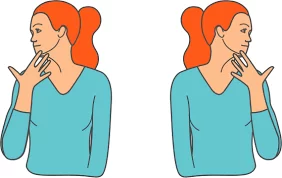
Side bending
Purpose: to reduce tightness and raise the mobility of the neck. It can be completed in a lying position or seated position.
How it be completed in a lying position?
Lie on your back in a supine position
Roll your head to the right by obtaining your right ear close to your right shoulder and you can utilize your hand to drag your head deeper into the stretch slightly.
Maintain for 20 seconds
Reprise it one more time on the left side
Recount this stretch 3-5 times per side
How it be completed in a seated position?
Sit in the proper or achieve a sitting posture
Decrease your right ear toward your right shoulder and you can utilize your hand to slightly dragging your head deeper
Maintain for 20 seconds
Recount the exact on the left side
Recount the stretch 3-5 times per side
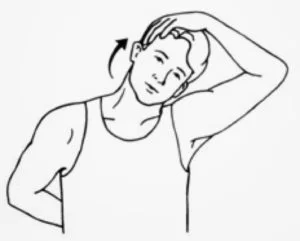
Scapular stabilization exercise:
Purpose: to ease the neck pain
Stand with your arms swinging at your side, your head facing directly ahead, and your shoulders comfortable
Roll your shoulders slightly backward and drag your shoulder edges into a down and back position. Your chest should protrude forward just while making this movement
Maintain for 10 seconds
Complete five repeats two times per day then you can raise the duration slowly
After that as an advance, you can anchor a resistance band to a door and then drag it toward you with both ends of it while doing a scapular squeeze

Isometrics
Purpose: for strengthening the muscles of the upper back, neck
Steps:
Put your palm on your forehead
Press your head against your palm without flexing your neck at all
Maintain 3-5 seconds
Recount 10 times per day

Prone cobra
Purpose: for strengthening the muscles of the upper back, neck, and shoulder griddle.
Steps:
Lye on the bottom in a supine position with your face down, you can place a rolled hand towel under your forehead for ease.
Put your arms at the sides with palms down on the bottom
create your tongue at the top of your mouth to stabilize the muscles in the front of the neck to help in strengthening
Squeeze the shoulder edges and lift the hands off the bottom
Move the elbows in, palms out, and thumbs up
Raise your forehead slightly around one inch off the towel with maintaining the eyes looking at the bottom
Maintain for 10 seconds, then do 10 recurrences.

The corner stretch
Goal: for stretching the muscles of the chest and front of the neck, and positioning the scapulae
Steps:
Face the corner of a room or put your forearms on the door holes
Create your feet position approximately 2 feet out from the corner
place your forearms on per side of the wall with the elbows barely below shoulder height.
Bend forward till you sense a fine stretch across the chest and shoulders
Maintain for 30 seconds, It can be accomplished 4 to 5 times per day
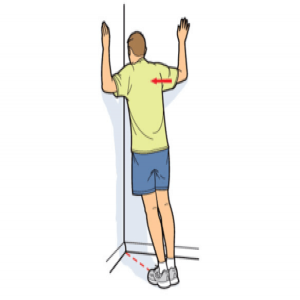
Levator scapular stretch
Goal: Stretching the levator scapulae, which is frequently the large knot in your upper back
Steps:
Sit in the proper sitting posture with maintaining shoulders down
Maintain the bottom of the seat with one hand
Barely turn your chin toward your armpit till feeling a relaxing stretch on the opposite side of the neck
Maintain for 20 seconds then accomplish it one more time for the opposite side
Complete 3 reproductions 2 times daily
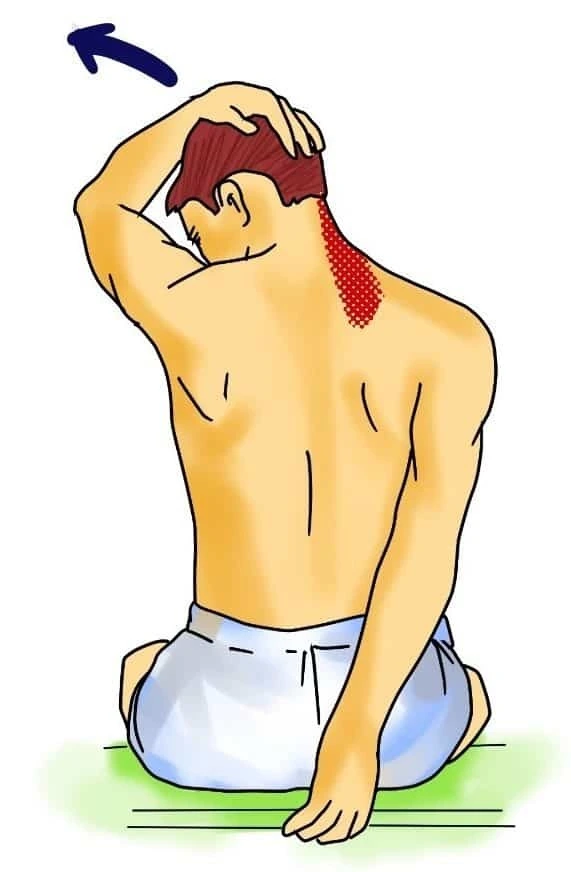
Alternative medicine
Nontraditional therapies have been attempted to manage whiplash pain, but analysis of how well they work is restricted. Some contain:
Acupuncture. Acupuncture includes inserting ultrafine syringes via precise places on your skin. It may offer some ease from neck pain.
Chiropractic care. A chiropractor conducts joint manipulation methods. There is some proof that chiropractic care may provide pain ease when paired with activity or physical therapy. Manipulation of the spine may generate minor issues, like numbness or dizziness, and infrequently injure spinal tissues.
Massage. Neck massage may supply short-term ease of neck pain from a whiplash injury.
Mind-body therapies. Activities that incorporate gentle motions and a fixation on breathing and mindfulness, like tai chi, qi gong, and yoga, may assist ease aches and stiffness.
How Do I Sleep With whiplash?
There are some useful tips for satisfied sleeping at night:
Before going to bed, attempt to use an ice pack or a heat compress for 20 minutes as it assists in reducing pain.
Use a particular neck cushion while sleeping, and avoid using the typical one in your bed. The neck cushion will maintain your neck steady and deliver better help for it so you can sleep well.
There are two of the finest sleeping places to use:
Sleeping on your back:
This controls an additional tension to be created upon the neck and the whole body
Sleeping on your side:
This will maintain your spine in more of a natural curvature, not out of alignment
Complications
Most patients who have whiplash feel okay within a few weeks and don’t appear to have any lasting results from the injury. Yet, some patients continue to have ached for several months or years after the injury happened.
It is hard to predict how each patient with whiplash may heal. In general, you may be more probable to have chronic pain if your first symptoms were extreme, started rapidly, and contained:
- Extreme neck pain
- More-limited range of movement
- Pain that spread to the arms
The subsequent risk factors have been connected to a more harmful effect:
- Keeping had whiplash before
- Older age
- Existing low back or neck pain
- A high-speed injury
Prevent
You can do several items to decrease your risk of creating whiplash. Unfortunately, it occurs unpredictably, so there’s no method to control it fully. The best items you can do to decrease your risk contain:
Adjust your vehicle seat. Placing your seat in the right position and utilizing the headrests can decrease the risk of creating whiplash from vehicle-related problems. There are also orthopedic seat pillows that can assist to change your height or posture so the seat security features, such as headrests, have the most use.
Wear your seat belt correctly. If your seat belt isn’t worn perfectly across your shoulder or it doesn’t snug against your body, it might not be capable to control your forward movement before your forward momentum generates a whiplash injury.
Drive safely. Being careful with driving can assist you to avoid problems where the driver behind you can’t stop in time. An instance of this is not driving too close to a person in front of you just to slam on the brakes, which might not exit someone behind you sufficient time to stop.
Position matters. If you notice or hear something that suggests your vehicle is approximate to be rear-ended and there’s time, put your head against the headrest and face straight forward. Having your head against a correctly put headrest maintains your neck, head, and body from moving at various speeds, which can generate whiplash.
Play contact sports safely. Avoiding harmful contact during these sports can assist avoid a whiplash injury to a further player.
Speak to a healthcare provider before riding roller coasters at a theme park. A primary care provider can inform you on whether or not you can and should ride roller coasters or experience further high-movement exercises that could conduct to injury.
FAQ
How long can whiplash take to heal?
Whiplash is a neck injury generated by a sudden motion of the head. It generally gets better within 2 to 3 months.
How serious is a whiplash injury?
Whiplash is frequently a minor problem, generating pain, soreness, or immobility but no long-term outcomes. When it’s more extreme, whiplash can generate long-term pain and difficulties. In the most severe patients, whiplash can generate extreme spinal injuries that can be permanently disabling or deadly.
Is massage good for whiplash?
Massage is a useful therapy for raising mobility and flexibility following a whiplash injury. By observing proper massage therapy methods for a whiplash injury, the person will feel less pain and will continue to recover.
Can whiplash be cured?
Most patients with whiplash get better within a few weeks by observing a therapy plan that contains pain drugs and exercise. Yet, some patients have chronic neck pain and further long-lasting difficulties.
Does whiplash show up on a CT scan?
The problem with analyzing whiplash is that it does not show up on an X-ray, CT scan, or MRI scan. The diagnosis is generally made by asking the person how they feel and then proceeding from there. A patient generally has pain in the back of their neck and they discover that the pain is more harmful when they move.

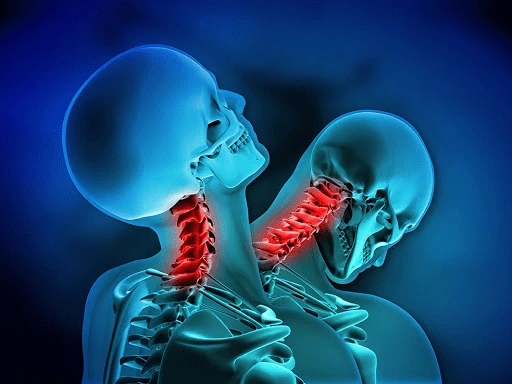
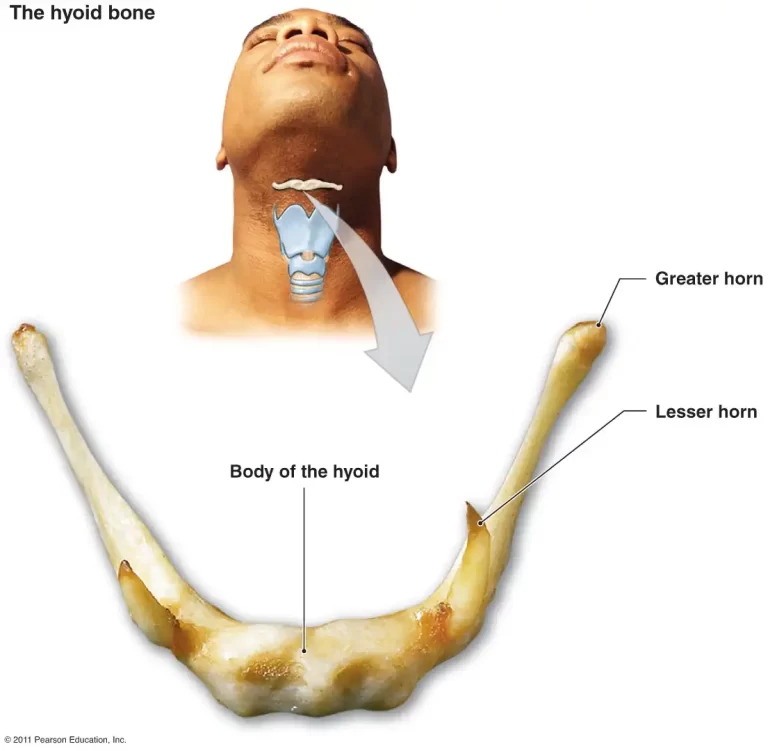

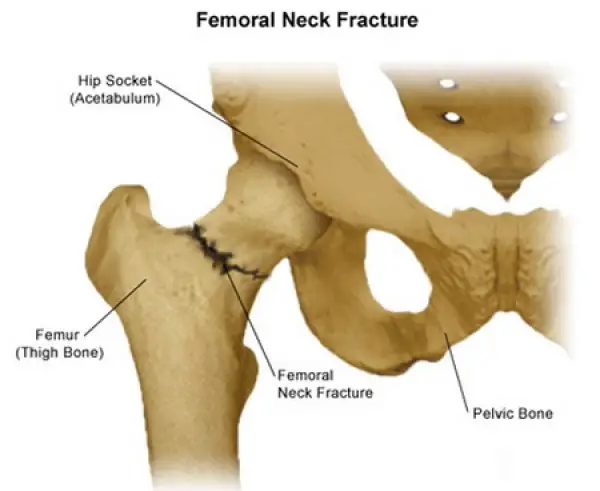
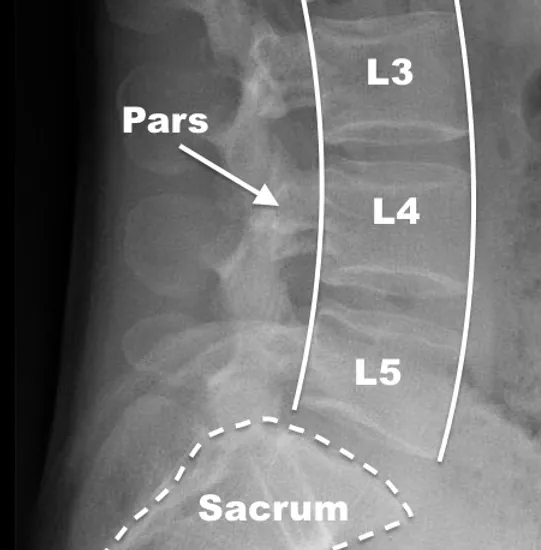
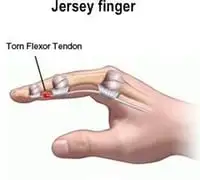
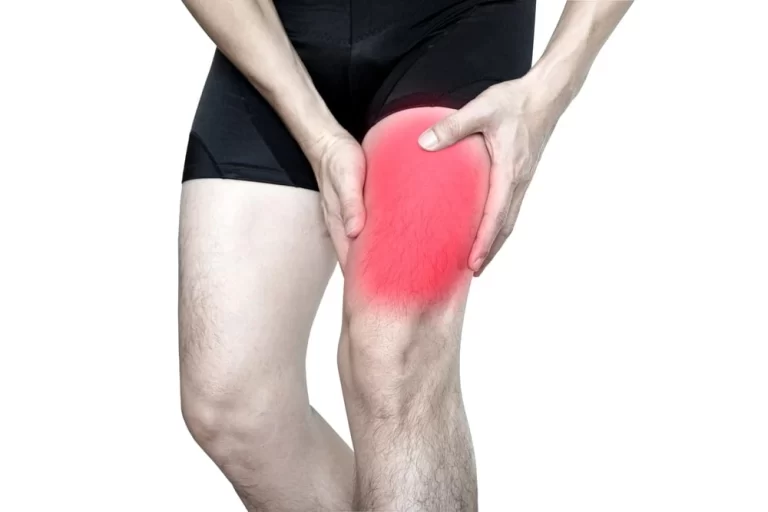
3 Comments